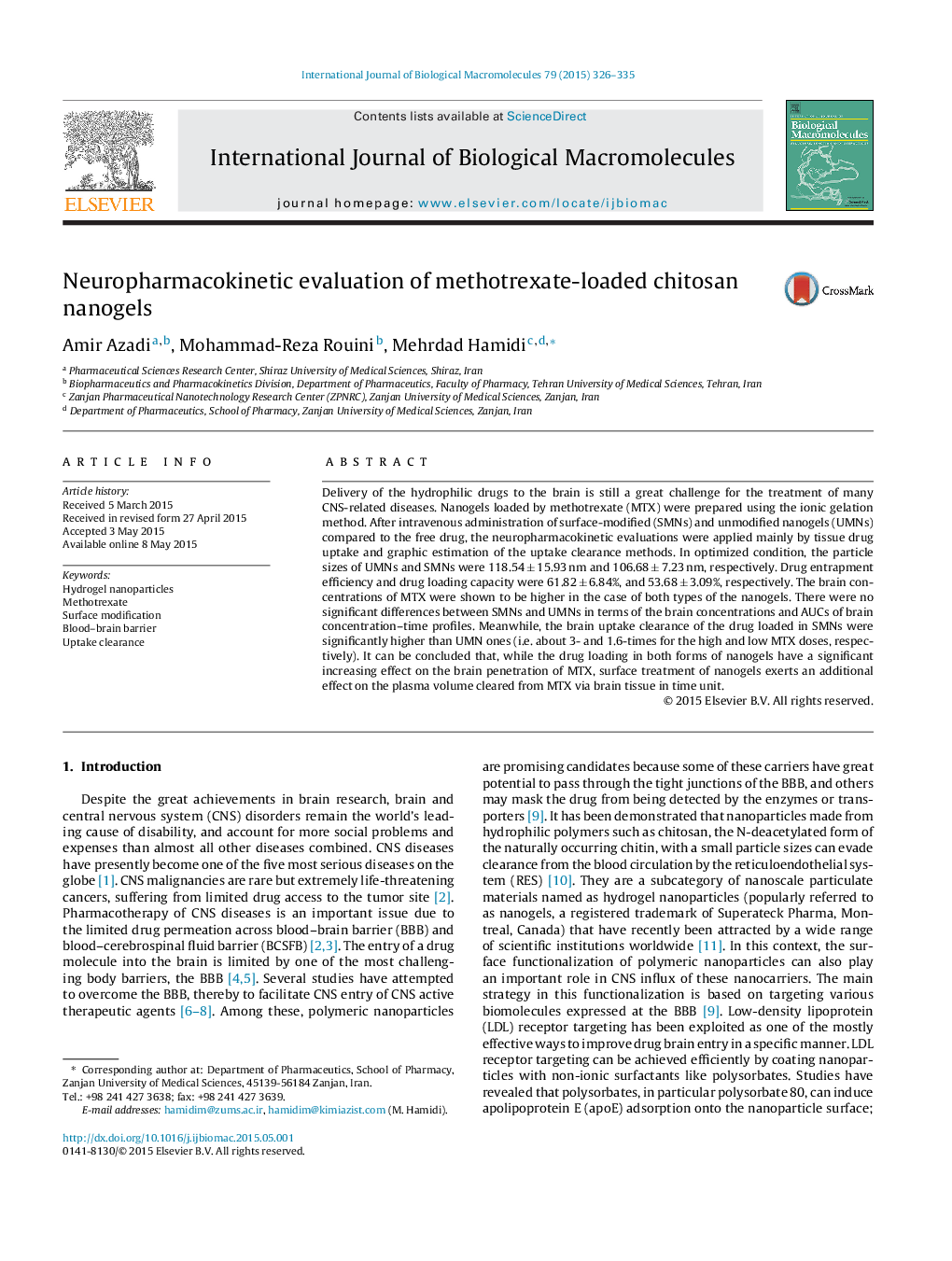| Article ID | Journal | Published Year | Pages | File Type |
|---|---|---|---|---|
| 8331076 | International Journal of Biological Macromolecules | 2015 | 10 Pages |
Abstract
Delivery of the hydrophilic drugs to the brain is still a great challenge for the treatment of many CNS-related diseases. Nanogels loaded by methotrexate (MTX) were prepared using the ionic gelation method. After intravenous administration of surface-modified (SMNs) and unmodified nanogels (UMNs) compared to the free drug, the neuropharmacokinetic evaluations were applied mainly by tissue drug uptake and graphic estimation of the uptake clearance methods. In optimized condition, the particle sizes of UMNs and SMNs were 118.54 ± 15.93 nm and 106.68 ± 7.23 nm, respectively. Drug entrapment efficiency and drug loading capacity were 61.82 ± 6.84%, and 53.68 ± 3.09%, respectively. The brain concentrations of MTX were shown to be higher in the case of both types of the nanogels. There were no significant differences between SMNs and UMNs in terms of the brain concentrations and AUCs of brain concentration-time profiles. Meanwhile, the brain uptake clearance of the drug loaded in SMNs were significantly higher than UMN ones (i.e. about 3- and 1.6-times for the high and low MTX doses, respectively). It can be concluded that, while the drug loading in both forms of nanogels have a significant increasing effect on the brain penetration of MTX, surface treatment of nanogels exerts an additional effect on the plasma volume cleared from MTX via brain tissue in time unit.
Related Topics
Life Sciences
Biochemistry, Genetics and Molecular Biology
Biochemistry
Authors
Amir Azadi, Mohammad-Reza Rouini, Mehrdad Hamidi,
